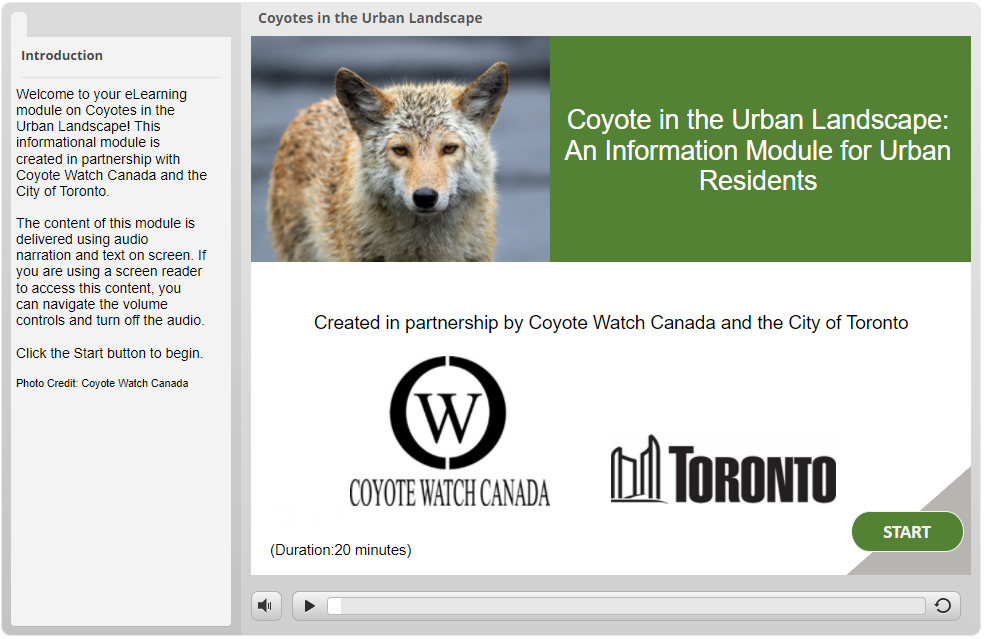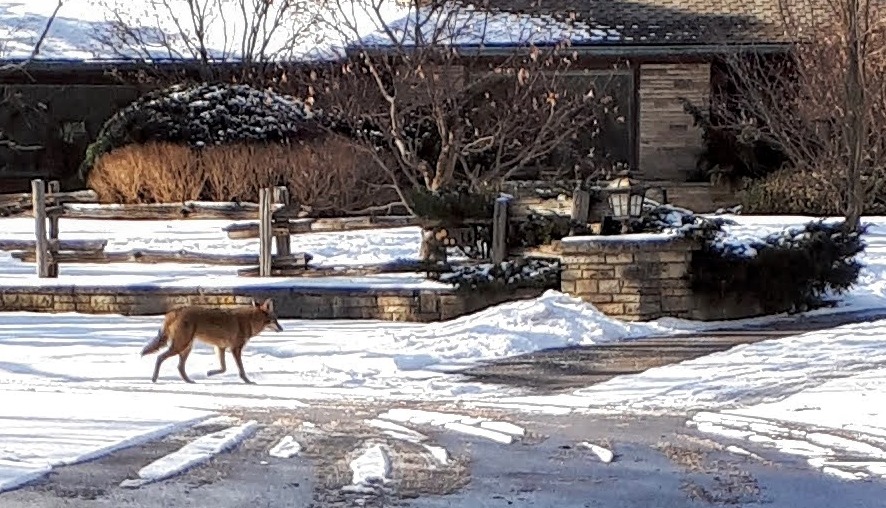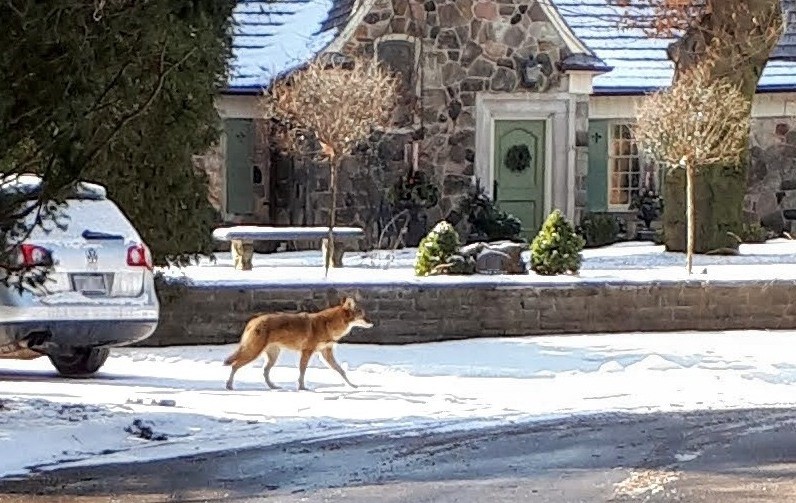Much to my surprise, today I learned about urban coyotes.
Trying to get some exercise on a sunny Sunday afternoon in February during the pandemic, I’d gone on a long walk towards the Yonge St. & York Mills Ave. area in North York. I decided to venture down a ravine-backed dead-end street I’d never tried before. My reward was my first close-up coyote sighting!
He (she?) loped out of a wooded area between two houses, a fair distance away from me, so I wasn’t too worried. What to do? I stood still and tried to look as non-threatening as possible. Happily, he ignored me and went on his way across the road and out of sight, up someone’s driveway (past the white station wagon in the picture at top).
Huh! I waited a while, savouring this unexpected brief encounter.
A few moments later, a resident appeared on the street, having also seen the animal. We had a good bellow about it from a distance.
And wouldn’t you know it, that coyote came back. I suspect he must have found no good way out, and so decided to try another path. Emboldened by the presence of the neighbour, I snapped a couple quick photos.
So what’s up with coyotes in Toronto? Quite a lot, as it turns out, and I’ve spent the afternoon reading.
Apparently coyote sightings are very common in January / February. The City of Toronto’s coyote webpage notes that, “They do not hibernate and may be seen more often during winter months as they are not hidden by foliage.”
The City offers a 20-minute eLearning course on Coyote in the Urban Landscape: An Information Module for Urban Residents, created in partnership with not-for-profit Coyote Watch Canada, “to learn basic facts about coyote behaviour and how both animals and people can remain safe.” How neat is that?

The City of Toronto is even making a point to publicize on social media that coyote sightings are normal at this time of year, including a news release a couple weeks ago.
I’ve been loving learning the natural and human history of Toronto’s parks and ravines this past year, so today’s lesson was Coyotes 101. I’m relieved to learn that humans have little to fear from them, and that their presence is part of a healthy ecosystem.


